| << Chapter < Page | Chapter >> Page > |
Crocodilia (“small lizard”) arose with a distinct lineage by the middle Triassic; extant species include alligators, crocodiles, and caimans. Crocodilians ( [link] ) live throughout the tropics and subtropics of Africa, South America, Southern Florida, Asia, and Australia. They are found in freshwater, saltwater, and brackish habitats, such as rivers and lakes, and spend most of their time in water. Some species are able to move on land due to their semi-erect posture.
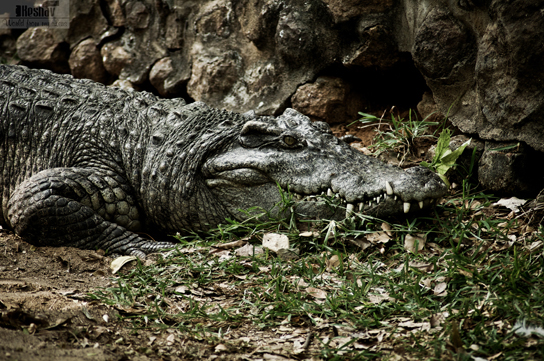
Sphenodontia (“wedge tooth”) arose in the Mesozoic era and includes only one living genus, Tuatara , comprising two species that are found in New Zealand ( [link] ). Tuataras measure up to 80 centimeters and weigh about 1 kilogram. Although quite lizard-like in gross appearance, several unique features of the skull and jaws clearly define them and distinguish the group from the squamates.
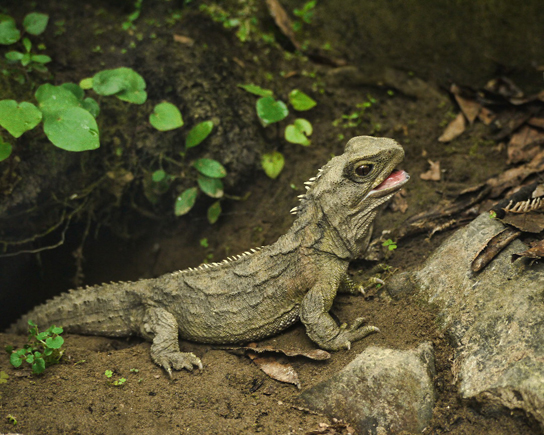
Squamata (“scaly”) arose in the late Permian, and extant species include lizards and snakes. Both are found on all continents except Antarctica. Lizards and snakes are most closely related to tuataras, both groups having evolved from a lepidosaurian ancestor. Squamata is the largest extant clade of reptiles ( [link] ). Most lizards differ from snakes by having four limbs, although these have been variously lost or significantly reduced in at least 60 lineages. Snakes lack eyelids and external ears, which are present in lizards. Lizard species range in size from chameleons and geckos, which are a few centimeters in length, to the Komodo dragon, which is about 3 meters in length. Most lizards are carnivorous, but some large species, such as iguanas, are herbivores.
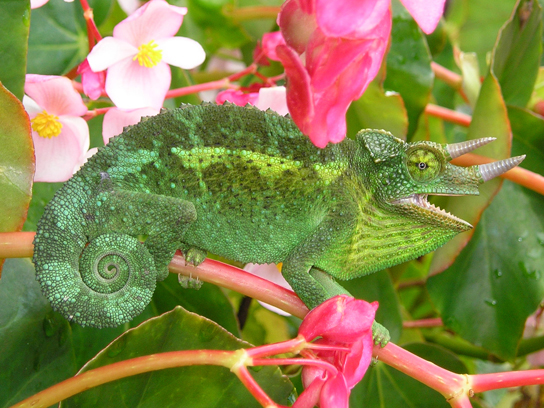
Snakes are thought to have descended from either burrowing lizards or aquatic lizards over 100 million years ago ( [link] ). Snakes comprise about 3,000 species and are found on every continent except Antarctica. They range in size from 10 centimeter-long thread snakes to 10 meter-long pythons and anacondas. All snakes are carnivorous and eat small animals, birds, eggs, fish, and insects. The snake body form is so specialized that, in its general morphology, a “snake is a snake.” Their specializations all point to snakes having evolved to feed on relatively large prey (even though some current species have reversed this trend). Although variations exist, most snakes have a skull that is very flexible, involving eight rotational joints. They also differ from other squamates by having mandibles (lower jaws) without either bony or ligamentous attachment anteriorly. Having this connection via skin and muscle allows for great expansion of the gape and independent motion of the two sides—both advantages in swallowing big items.
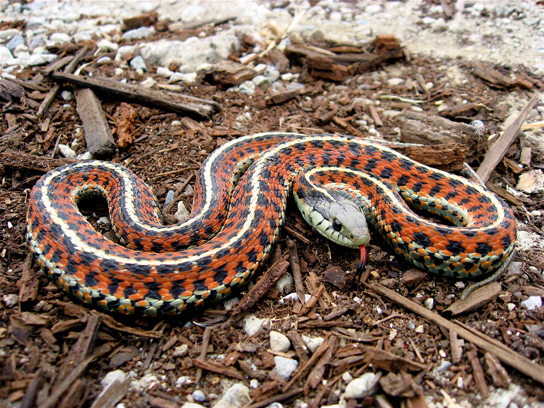
Turtles are members of the clade Testudines (“having a shell”) ( [link] ). Turtles are characterized by a bony or cartilaginous shell. The shell consists of the ventral surface called the plastron and the dorsal surface called the carapace, which develops from the ribs. The plastron is made of scutes or plates; the scutes can be used to differentiate species of turtles. The two clades of turtles are most easily recognized by how they retract their necks. The dominant group, which includes all North American species, retracts its neck in a vertical S-curve. Turtles in the less speciose clade retract the neck with a horizontal curve.
Turtles arose approximately 200 million years ago, predating crocodiles, lizards, and snakes. Similar to other reptiles, turtles are ectotherms. They lay eggs on land, although many species live in or near water. None exhibit parental care. Turtles range in size from the speckled padloper tortoise at 8 centimeters (3.1 inches) to the leatherback sea turtle at 200 centimeters (over 6 feet). The term “turtle” is sometimes used to describe only those species of Testudines that live in the sea, with the terms “tortoise” and “terrapin” used to refer to species that live on land and in fresh water, respectively.
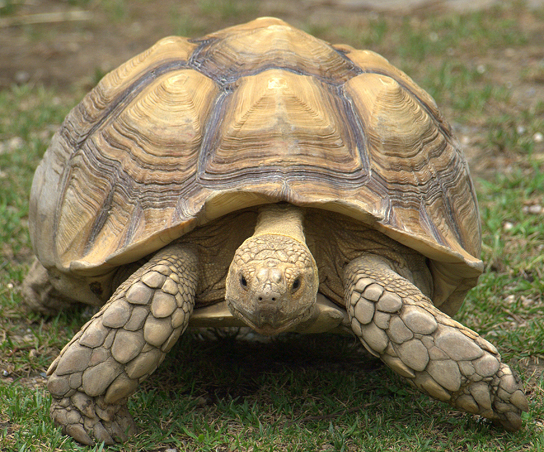
The amniotes are distinguished from amphibians by the presence of a terrestrially adapted egg protected by amniotic membranes. The amniotes include reptiles, birds, and mammals. The early amniotes diverged into two main lines soon after the first amniotes arose. The initial split was into synapsids (mammals) and sauropsids. Sauropsids can be further divided into anapsids (turtles) and diapsids (birds and reptiles). Reptiles are tetrapods either having four limbs or descending from such. Limbless reptiles (snakes) are classified as tetrapods, as they are descended from four-limbed organisms. One of the key adaptations that permitted reptiles to live on land was the development of scaly skin containing the protein keratin, which prevented water loss from the skin. Reptilia includes four living clades: Crocodilia (crocodiles and alligators), Sphenodontia (tuataras), Squamata (lizards and snakes), and Testudines (turtles).
[link] Which of the following statements about the parts of an egg are false?
[link] D
[link] Members of the order Testudines have an anapsid-like skull with one opening. However, molecular studies indicate that turtles descended from a diapsid ancestor. Why might this be the case?
[link] The ancestor of modern Testudines may at one time have had a second opening in the skull, but over time this might have been lost.

Notification Switch
Would you like to follow the 'Biology' conversation and receive update notifications?